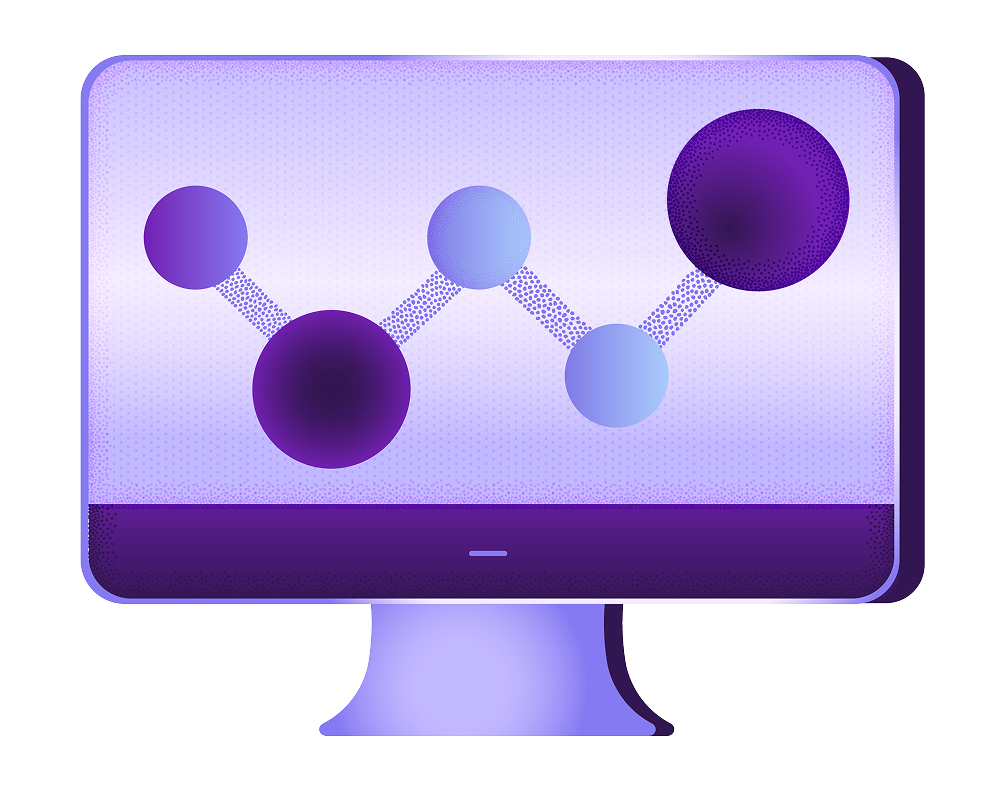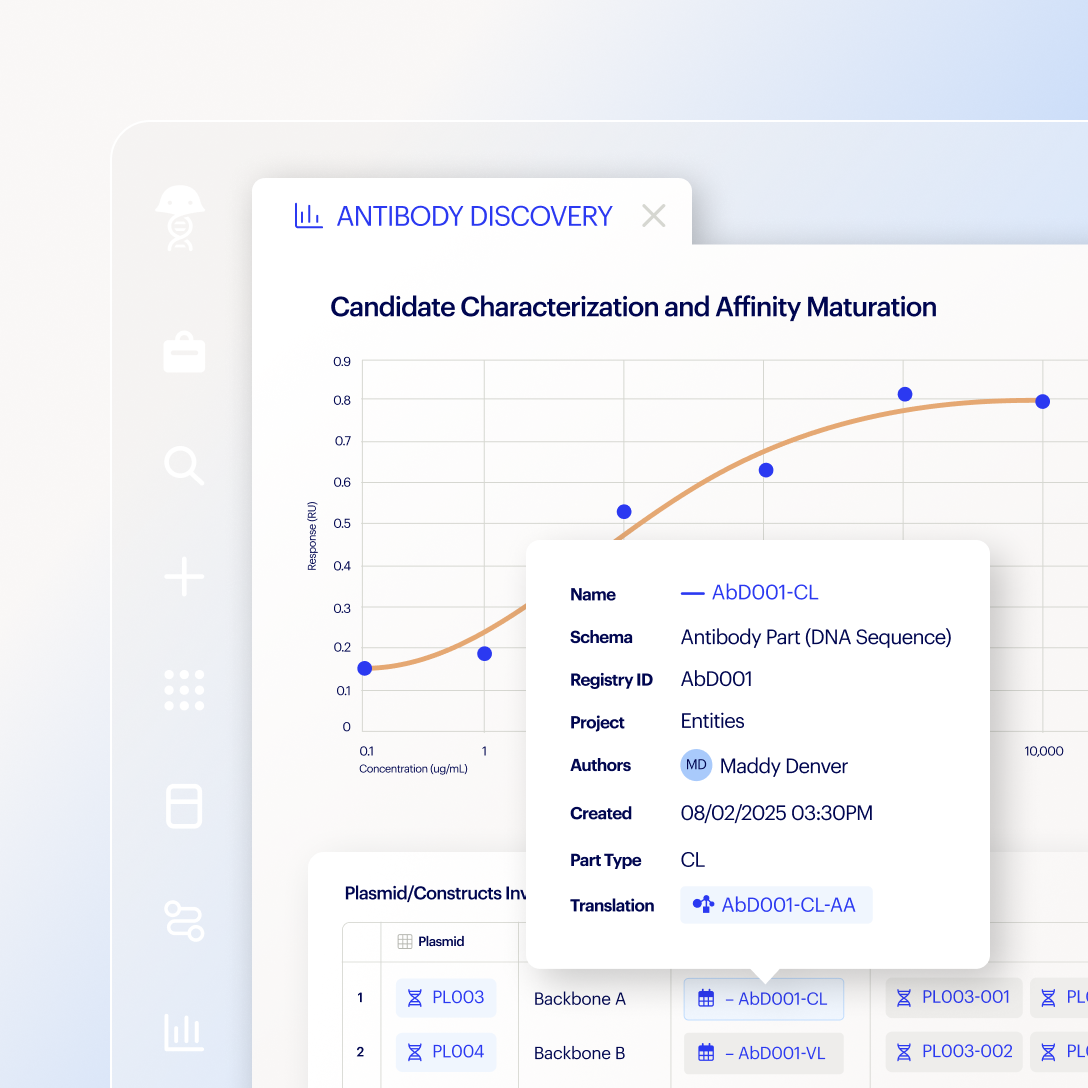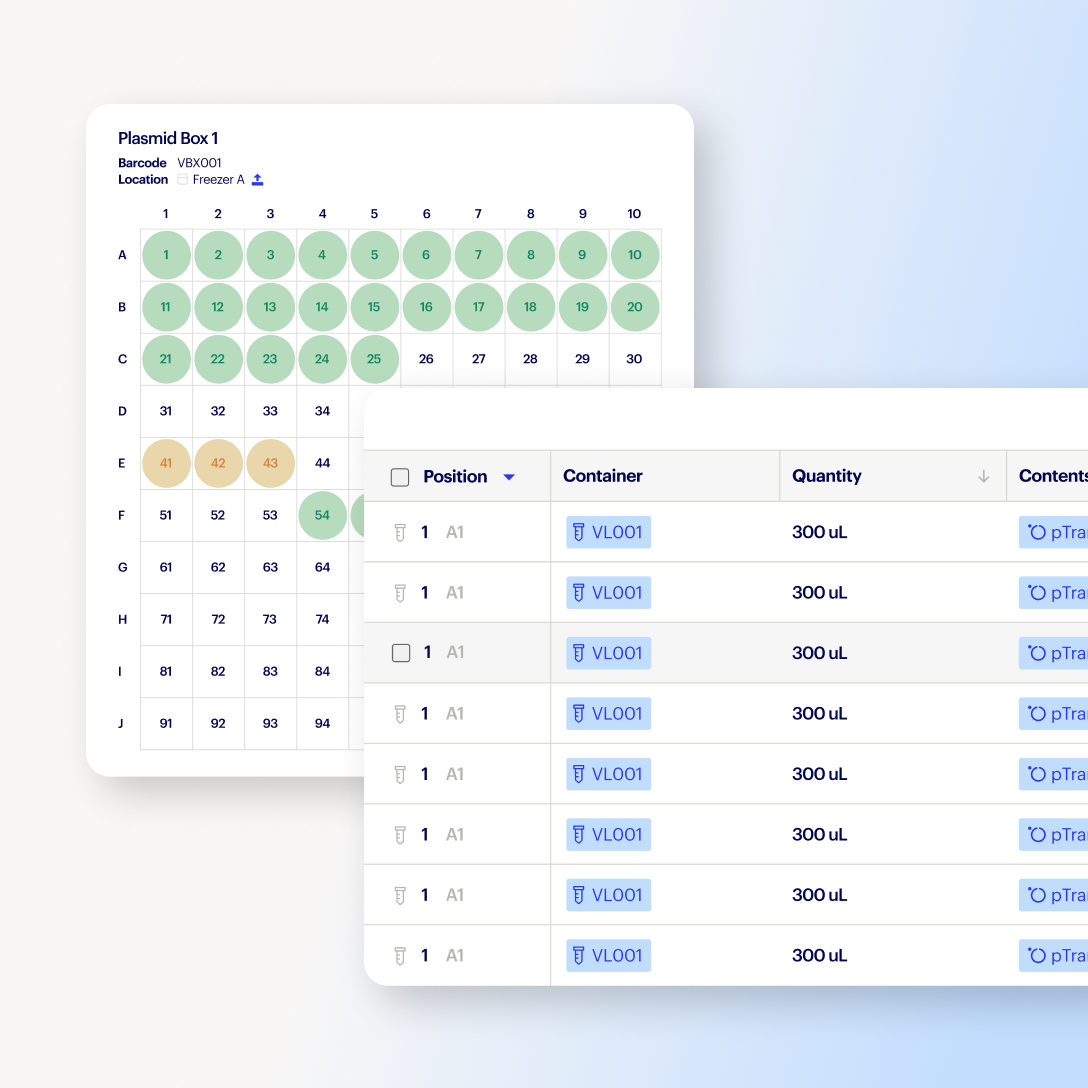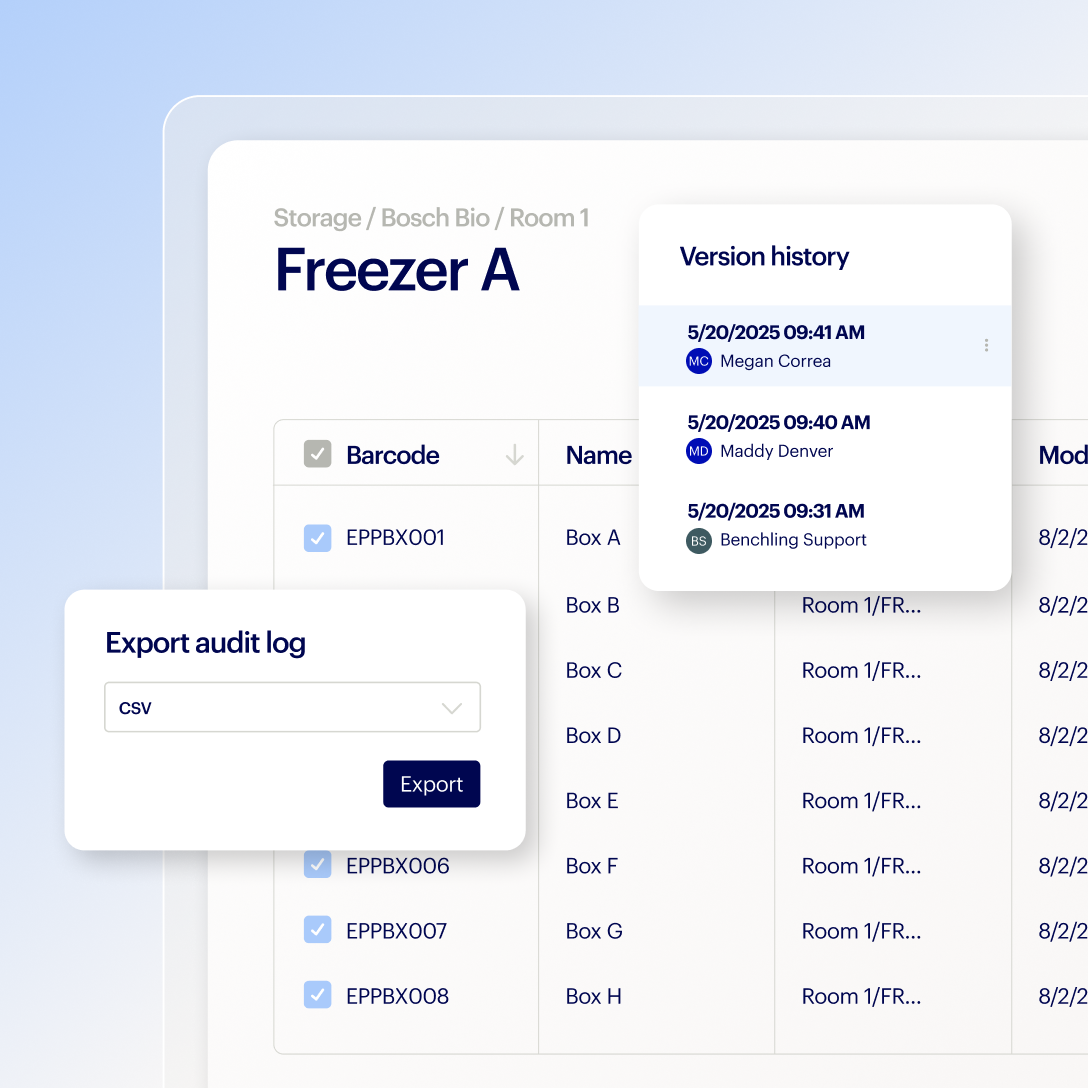
Product sheet

Benchling is more than just an ELN. You can model and track scientific data for biomolecules, small molecules, cell lines, animals, reagents, and more.
Whether you're scaling a team, ensuring regulatory compliance, or preparing data for AI-powered insights, our Notebook equips scientists with the tools to focus on what matters most — the science.


Transforms unstructured notes into high-quality, analysis-ready data
Facilitates real time collaboration, ensuring that teams stay aligned
Connects data seamlessly across the R&D lifecycle, from discovery through development

Maintains unstructured, static data that is hard to navigate and analyze
Separates teams due to fragmented systems and siloed information
Relies on manual integrations that make connecting data tedious and inefficient

Keep experiments, metadata, collaboration, and analysis in one platform
Retrieve past entries quickly with advanced digital search
Ensure data consistency across teams with templates & schemas

Share and co-edit entries with built-in tagging, comments, and task assignments
Control document access with adjustable, role-based permissions for secure data sharing
Connect templates, samples and results with effortless integration between entries

Develop SOPs for recording, sharing, and managing scientific work consistently
Store data securely in a validated, cloud-native environment
Meet 21 CFR Part11 compliance requirements with audit-ready electronic records and signatures


Support advanced research with a notebook designed for complex, cross-disciplinary science.

Unify your data management across all Benchling apps. Store your research in a platform that is secure, configurable, and compliant.

Link results directly to samples and experimental data in real time for faster access and stronger traceability.

Use pre-designed templates to standardize entries and ensure consistency across experiments and teams.

Integrate with your LIMS to connect samples and results, streamline processes and improve workflow efficiency.

Automate the creation of standardized templates and SOPs to reduce manual work and accelerate productivity.
A digital replacement for a paper notebook to document and record data, samples, and experimental work. An ELN is a software tool that can be either on-prem or cloud-based. Information can be unstructured or structured work. Data or images in various formats can be imported into entries. Oftentimes, used to document genomic or proteomic sequences, protocols, recipes, experimental observations or conclusions and process workflows. Tables can be created within entries to organize information or create a checklist of tasks or steps to perform. Security of the information is critical and should be carefully considered when selecting an ELN to protect and store valuable information. An ELN may be a stand alone or more effectively be part of a LIMS or LES platform.
This will vary with each organization based on how many people are trained, the level of detail for the training—basic vs. advanced usage, and how they want to utilize the ELN in the organization. If there are inventory or registration functionalities that can also add additional time to the implementation process. Ask your technical consultant to provide a proposed schedule and time estimate to plan accordingly.
Paper notebooks have limitations such as easily searching or finding information, storage conditions (physical as well as timely) and generally can not scale efficiently as an organization grows. Security can also be a major drawback to paper documentation as there is only a single physical copy that typically is not backed-up. Even those in academia can benefit from an electronic lab notebook to promote better reproducibility of results and the sharing of information with other teams-whether in academia or biotech. Furthermore, clinical FDA and patent filings require defined audit trails and reporting that can be very time and labor intensive to generate from paper documentation and ultimately result in delays to market.
It is important to distinguish that an ELN is a component to a LIMS system. Although the terms are used synonymously, they are not the same despite some claims. Check with the tool provider to determine if their ELN software is compatible with your LIMS and if it will meet your needs today and in the future as your research and organization grows.
The biggest advantage to cloud-based ELN software over on-prem is the superior storage and secure back-up of information. Also, cloud-based solutions afford access to information anywhere provided an internet link is available. On top of this, with cloud-based solutions updates and bug-fixes can be pushed out immediately to address issues and get users back online working faster. For example, Benchling Notebook is a secure cloud-based software that is more than a traditional ELN as it is part of a LIMS productivity hub that comprises multiple connected applications that help streamline sample and data recording, accelerate analysis of results and connect teams across an organization.
What you pay often equates to the features and flexibility of what you get when selecting an ELN tool. It is important to evaluate your options and determine how you, your teams, and your organization plan to use the electronic lab notebook not only today but in the future as your research and company grows and expands.
Often, lower-cost ELN options are limited in their feature offerings or the ability to be updated to address the more rigorous needs of modern research. Also, many low-cost ELN options such as Microsoft OneNote or Excel, Labguru, eLabjournal, Labarchives or SciNote for example are limited point solutions that cannot be integrated with other software solutions resulting in disparate or siloed channels of information that can negatively influence results and decisions.
Your electronic laboratory notebook should be the central source and repository for all your data, samples, procedures, and results. It is your diary to store the most precious and valuable information you have—your research. When considering an ELN, it is only one part of your lab workflow and processes. Find a tool that will help you to both store and share your information as that is the first step to improve your workflows. An ELN is also important to archive valuable information that may need to be accessed at a later date so make sure that process can be easily performed.
The price of an electronic lab notebook can vary greatly with free options that are open source to more elaborate and expensive solutions with numerous features and capabilities. Data security, functionality, data management, and data integrity should be key considerations when selecting an ELN software. This platform will store your greatest intellectual property, your research.
You should consider your ELN as the organization's central source of truth to store your laboratory information. As your experimental work as well as the company grows, the amount of data generated and collected will increase. It is important to select a cloud-based ELN that can handle your increasing amounts of data, has the ability to create templates and procedures that can be standardized and has the ability to share this information across the organization.
In addition, having your ELN act as a data management system that scientists can link external images or citations from sources, such as Mendeley, can help connect data and teams. In addition, consider an ELN that can act as a link between data and inventory management to specific samples that are stored. Together, this should help support better data management and improve collaboration among team members.
Various ELNs will have different abilities to handle both structure and unstructured data. This is an important question to ask when evaluating an electronic lab notebook. Can it handle the types of data and information that you are most commonly working with-both today and what you may anticipate needing in the future.
For certain research organizations high throughput screening and automation of tasks can lead to generation of extremely large data sets so selecting an ELN that can handle large amounts of data while also having the software development capabilities available to customize and tailor to your research needs is important.